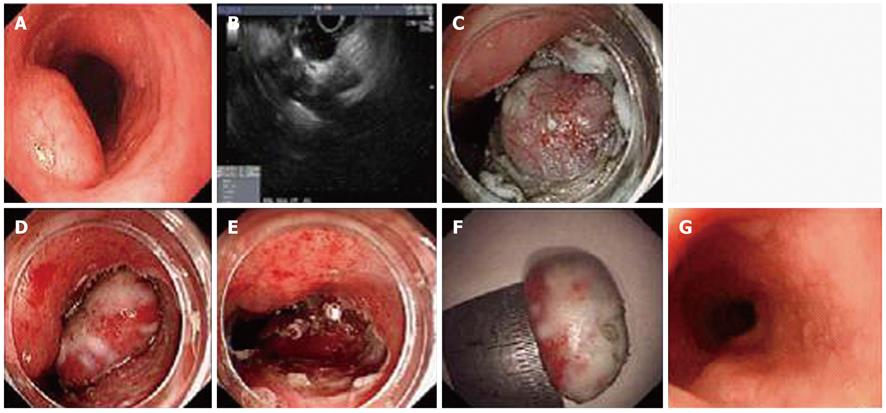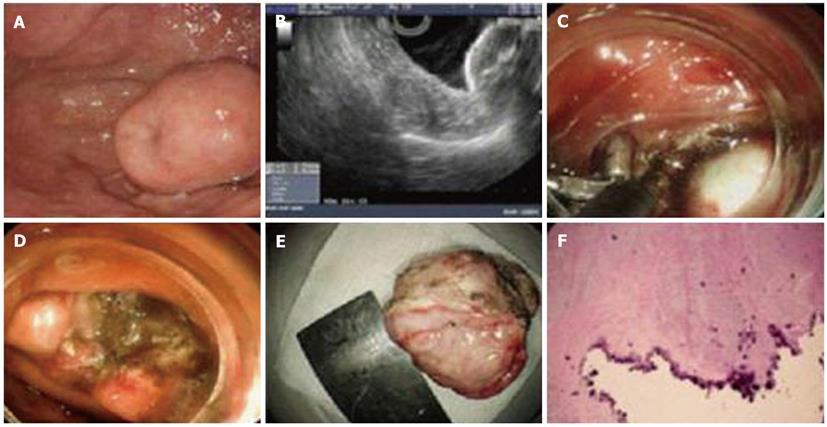Copyright
©2012 Baishideng Publishing Group Co.
World J Gastrointest Endosc. Dec 16, 2012; 4(12): 565-570
Published online Dec 16, 2012. doi: 10.4253/wjge.v4.i12.565
Published online Dec 16, 2012. doi: 10.4253/wjge.v4.i12.565
Figure 1 Endoscopic submucosal dissection for submucosal tumor in the antrum.
A: Lesion located in the gastric antrum; B: Circumferential incision of the lesion after submucosal injection; C, D: Dissection and exposure of the submucosal lesion; E: Ligation of the root of the lesion with a detachable endoloop; F: Endoscopic follow-up after 1 mo; the lesion disappeared.
Figure 2 Endoscopic submucosal dissection process for esophageal submucosal tumor.
A: Esophageal submucosal tumor located in the median esophagus; B: The lesion was found in the muscularis propria by endoscopic ultrasonography; C, D: The lesion was exposed by dissection of a hook knife and gradually resected by an IT knife-2; E: After the tumor fell off, the cut oozing was stopped using metal clips; F: The lesion (2.0 cm × 1.0 cm) was completely resected with an intact envelope; G: After 2 wk follow-up, the incision disappeared and the wound surface looked smooth.
Figure 3 Gastrointestinal stromal tumors in the fundus were dissected by endoscopy.
A: Submucosal tumor located in the fundus; B: The lesion was shown in the muscularis propria by endoscopic ultrasonography (EUS); C: White lesion was clearly identified, two clips were used to arrest bleeding from small submucosal vessel; D: The wound surface after dissection of the lesion; E: The dissected tumor (3.0 cm × 2.0 cm) with intact envelope; F: Pathological image of the resected gastrointestinal stromal tumors and calcification in the center of the lesion in accordance with EUS image.
- Citation: Huang ZG, Zhang XS, Huang SL, Yuan XG. Endoscopy dissection of small stromal tumors emerged from the muscularis propria in the upper gastrointestinal tract: Preliminary study. World J Gastrointest Endosc 2012; 4(12): 565-570
- URL: https://www.wjgnet.com/1948-5190/full/v4/i12/565.htm
- DOI: https://dx.doi.org/10.4253/wjge.v4.i12.565











